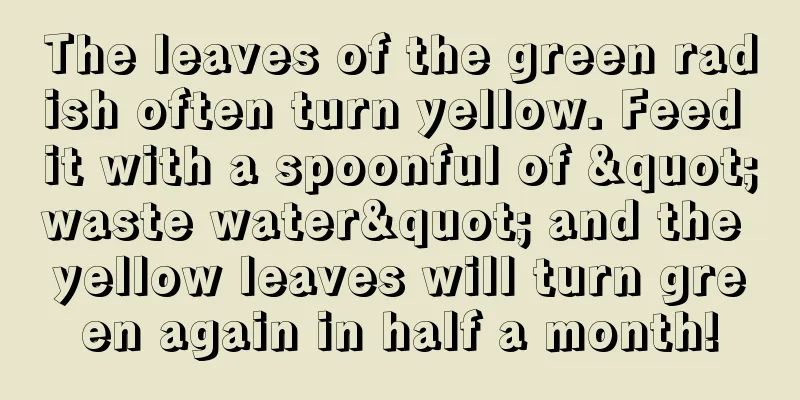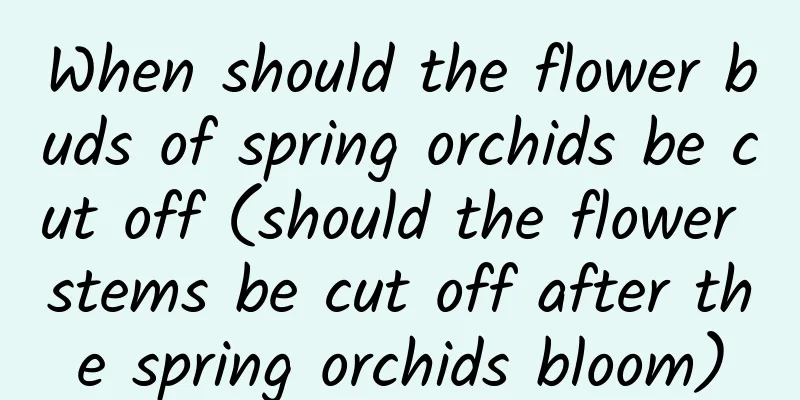Reasons and treatments for yellow leaves of moonflower

1. Temperature discomfortReason: The temperature suitable for its growth is generally between 15-28 degrees. Temperatures that are too high or too low will affect its normal growth, and the plant will show signs of yellow leaves due to frostbite from low temperature or lack of water from high temperature. Solution: When the temperature is too low, the plant needs to be placed in a warm place indoors for maintenance, and wait for the plant's stem to recover slightly before starting normal maintenance. When the temperature is too high, place it in a cool place with good ventilation. Spray some water on the surface of the leaves to achieve a cooling effect. 2. OverwateringReason: It likes to grow in a relatively humid environment and has a higher demand for water. In this way, it is easy to overwater, causing water accumulation in the pot, leading to root rot and yellowing of leaves. Solution: You need to immediately control watering and stop fertilizing. Then loosen the soil frequently to ensure good soil ventilation. Then move the plant to a ventilated and well-lit place so that excess water in the soil can evaporate as quickly as possible. 3. Too much lightReason: Its normal growth requires sufficient warm sunlight, and enough light can make it bloom normally. However, if exposed to strong sunlight in summer, the leaves will turn yellow. Treatment: First place it in a cool place with only diffuse light, then spray some water on the leaves, water it in small amounts, and wait for it to recover. After the leaves of the plant have slightly returned to normal, place it in a semi-sunny place for maintenance, or block out strong light. In addition, make sure you get at least 4 hours of sunlight every day. 4. PestsReason: Aphids are a very harmful insect pest. It is a serious threat to more than 250 species of plants, and moonflower is one of them. This pest mainly sucks the sap from the plants, causing a large loss of nutrients, gradually turning yellow and eventually withering. Treatment: Medication should be used immediately. You can directly use 1500-2000 times diluted 40% imidacloprid water solvent or 3000 times diluted 50% cypermethrin wettable powder to spray it directly. Then place the plant in a ventilated and well-lit place to allow it to recover. |
<<: Causes and treatments of yellow leaves of round-leaved arrowroot
>>: The causes and treatments of yellow leaves of rose and pomegranate
Recommend
How to grow tennis flower pot plants
1. Lighting It grows best in semi-shade and is af...
How to divide the copper coin grass into pots, and when is the best season to divide the copper coin grass into pots
1. Season for dividing the pots The season for di...
How do Gypsophila seeds come from?
How do Gypsophila seeds come from? The seeds of b...
How long is the growth cycle of shepherd's purse?
Introduction to Shepherd's Purse Growth Sheph...
How to grow ginger?
Ginger is a plant that prefers warm and humid cli...
Mage soil ratio
1. Soil ratio The Master is more suitable for gro...
How often should I water the ball orchid?
How often should I water the ball orchid? In summ...
The efficacy and function of saffron
1. Regulate endocrine Saffron can promote blood c...
Cultivation methods and maintenance matters of old millet star piles
How to grow millet star into an old pile The old ...
How to propagate small-fruited roses
1. Sowing method Sowing is the most basic method ...
When do sunflowers start to be planted?
Sunflower is a common garden plant suitable for p...
How to propagate green chrysanthemum and precautions
Green chrysanthemum reproduction method The main ...
What width of pot is suitable for Golden Edge Tiger Pilan
1. Cultivate a plant Because the root system of G...
Characteristics and cultivation methods of freesia
Freesia is a perennial bulbous flower of the genu...
How many years does it take for greenhouse cherries to bear fruit?
Introduction to greenhouse cherry cultivation Gre...









